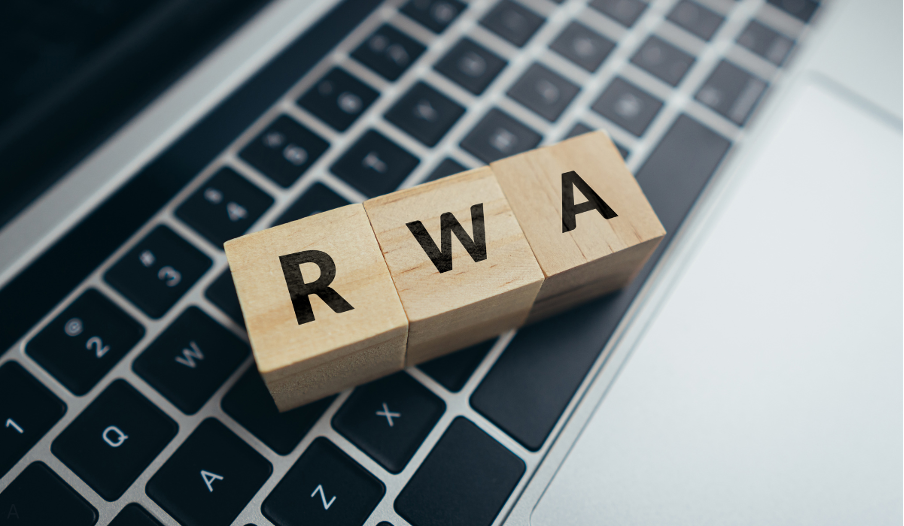From the outside looking in, there’s no denying that over the last couple of years, tokenized real-world assets (RWAs) have had an indelible impact on the crypto market, offering participants a myriad of opportunities across a host of different sectors, including real estate, commodities, and even private credit.
This shift has, in large part, been precipitated by the growing need for tangible, stable assets within the digital realm — especially since they serve as the perfect bridge between the traditional finance (TradFi) economy and the burgeoning crypto ecosystem.
To put things into numerical context, over the past year alone, the total market capitalization of the tokenized treasury market increased by 782%, reaching $931 million by early 2024. Similarly, when talking about the private credit market, the value of on-chain credit loans grew by 84% between January and September 2023, scaling up to a sizable $210.5 million in the process.
That’s not all. As the market continues to mature and grow, experts believe the RWA sector could blossom and attain a valuation between $10 – $15 trillion by 2030. This expansion stands to be driven by the convergence of crypto and trad-fi systems, making it crucial for market participants to source out and utilize only quality RWA protocols — i.e., those offerings that are secure, trustworthy, and innovative.
A deep dive into the matter
Managing an RWA protocol requires robust technical infrastructure and adherence to best practices. For instance, most of the top asset tokenization platforms in the market today allow users to fractionalize RWAs and add them on-chain, thus increasing capital liquidity, transparency, and accessibility to these unique financial instruments.
However, the true hallmark of a leading RWA protocol is its steadfast commitment to comprehensive risk management systems. Astute risk assessment, monitoring, and mitigation strategies are imperative for safeguarding investor capital as well as maintaining the platform’s mainstream credibility.
This is an area where traditional finance veterans can lend invaluable expertise. Those with deep experience in sectors like credit lending, real estate, and commodities can bring critical domain knowledge for scrutinizing potential investments and navigating regulatory landscapes. By bridging crypto-native innovation with seasoned risk management from TradFi, the most cutting-edge RWA platforms are well-positioned to blaze a trail toward mainstream adoption.
One protocol exemplifying this powerful merger of innovation and risk management prowess is Zivoe. In its most basic sense, it can be described as a credit protocol aiming to democratize access to affordable lending by bridging decentralized liquidity with real-world borrowers. Its founding team features diverse backgrounds spanning both traditional lending and blockchain development.
Helming Zivoe is Jay Abbasi, a tech specialist leveraging over two decades of finance leadership experience, including formerly operating one of the largest tribal lenders in the United States. In his own words, Abbasi’s first-hand insights into the predatory practices plaguing the high-interest consumer lending sphere inspired Zivoe’s mission. Complementing this traditional lending acumen is Kristal Gruevski, whose decade of regulatory compliance expertise as a fintech attorney safeguards Zivoe’s operations.
Rounding out the team is chief technical officer (CTO) John Quarnstrom, the lead architect for pioneering DeFi protocol Maple Finance. This fusion of veterans and blockchain innovators has uniquely positioned Zivoe to lead the charge in navigating the complex realm of RWA lending.
Lastly, with several key risk management strategies baked into its foundational structure, Zivoe epitomizes the future of responsible yet democratized credit facilitated using decentralized rails.
Looking ahead
As the crypto sector continues to mature and grow, there is substantial evidence to believe that the convergence of crypto and trad-fi can help the RWA economy boom further over the coming decade. To this point, these unique assets have already started playing a pivotal role — in providing stable, yield-bearing investment options — for many investors.
Moreover, as the adoption of RWAs accelerates, local regulatory frameworks also need to evolve to accommodate the unique characteristics of these assets. In fact, this regulatory clarity can instill greater confidence among institutional investors, leading to increased participation in this market. Furthermore, the continued development of the DeFi ecosystem (alongside improvements in blockchain technology) can enhance the efficiency and security of RWA transactions, solidifying their role in shaping tomorrow’s economic landscape.
